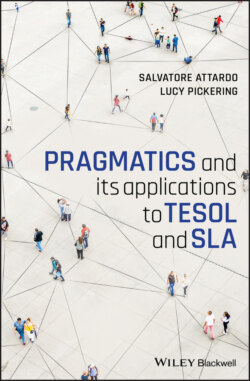Читать книгу Pragmatics and its Applications to TESOL and SLA - Salvatore Attardo - Страница 22
Notes
Оглавление1 1. Of course, many other aspects of the situation have to be just right for the transaction to go off successfully: first, and obviously, the word “donut” appears in the middle of a sentence, and the words and the syntax of the sentence will be a significant part of overall the exchange. Furthermore, the man and the employee must speak the same language, the shop must not be out of merchandise, the man and the employee must share a desire for the transaction to be successful, for reasons that are probably very different, etc. As we said, we are ignoring all these aspects for the time being. They will be considered in other chapters of the book.
2 2. Usually, a person, but animals can produce signs as well: the field of zoo-semiotics deals precisely with signs produced by animals and insects: the bee dance is a famous example of communication by insects.
3 3. Other terms used are also “entailment” and “implication.”
4 4. Note that the verb is an a bare infinitive form, because its tense and mood are not part of the proposition. We will examine this in more detail in Chapter 7.
5 5. From a different, nonlinguistic, perspective one could describe the situation, for example, as a commercial transaction or as a social event governed by practices of social engagement. The utterance or speech act then becomes more or less irrelevant. These perspectives are not antagonistic to the linguistic one. They merely reflect different interests or areas of research. From a linguistic perspective, the context is what comes “with the text” (con-text) as should be obvious even just from the etymology of the term.
6 6. The T/V pronouns stand for Latin tu and vos as the general term for all pronouns that show the opposition between singular/plural second person and familiarity/lack thereof. See Brown and Gilman (1960) and Section 7.2.3 for further discussion.
